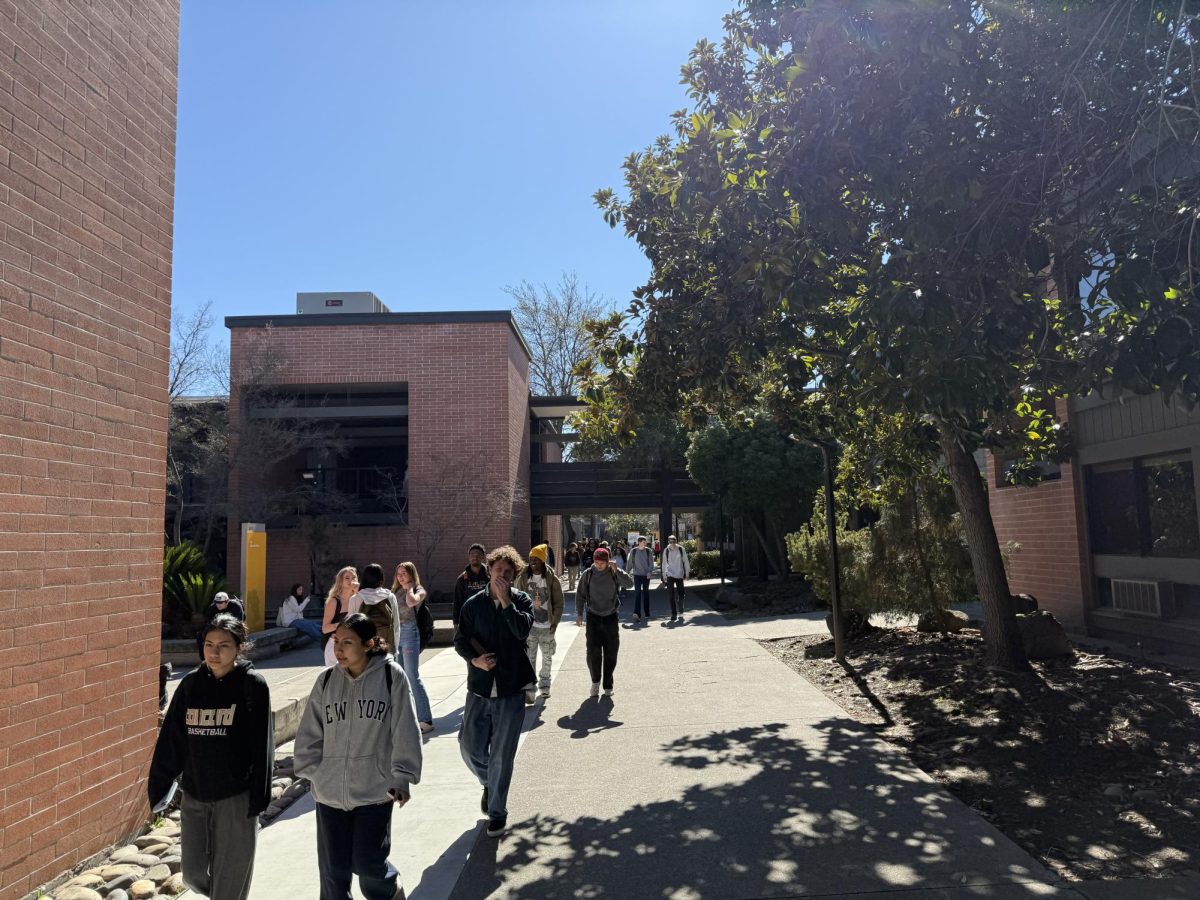A black kerchief masking her fiery red hair, Anita King waits for an idea to inspire her while munching on a double dark chocolate Milano.
An idea arrives and she grabs her pen to write it down before it escapes her. “This is just one project, but not what I will write for NaNo WriMo,” she says.
“NaNo WriMo rocks,” says King, 25, a DVC student and a sometime NaNo WriMo prize winner for the past seven years.
National Novel Writing Month got its start in San Francisco by writer Chris Baty in July of 1999 and is now an international event held every November.
On the NaNo WriMo Web site, www.nanowrimo.org, Baty describes that first year. “The short version is that our novels, despite our questionable motives and pitiful experience, came out okay. Not great. But not horrible, either. And, more surprising than that, the writing process had been really, really fun.”
Participants must write one 50,000-word novel from scratch in a month’s time, beginning Nov. 1 and ending by midnight Nov. 30 to make the official list of winners. Winners receive a digital web badge, a certificate and a free paperback copy of their book.
King got involved in NaNo WriMo after encouraging bloggers talking about it online. She then got curious and investigated it herself on the Web site.
“I have always wanted to write a novel, and my tendency is to get about 30 pages in and then stop,” she says. “NaNo WriMo looked like it would be a good excuse to write without worrying about perfection.”
King says she also loves meeting other writers at varying stages of their craft, especially local writers involved in the events. “The idea is to write a 50,000 word first draft of a novel in 30 days.
“It’s a challenge, and the events help with word count.”
But not everyone likes NaNo WriMo.
Chris Brecheen, 36, a San Francisco State University creative writing major, says many of his fellow students and professors “really hate” its focus on only one part of the writing process.
“If there was a National Novel Fleshing Out Month and about five National Novel Revising Months, I think they’d be more into it,” he says.
The revision process, he adds “is probably 75 percent of mediocre fiction and more like 95-plus percent of really good fiction.”
But king emphasizes the advantages of NaNo WriMo’s intensity.
She enjoys many events, such as “A Night of Writing Dangerously,” various write-ins at bookstores or other locations, and fundraisers for other causes.
“It’s a community working to write and help others,” she says.
King plans to host write-ins at DVC, possibly on Thursdays in the Learning Center. She plans to post the day, times, and location in LC 105 about a week before NaNo WriMo begins.”
Her favorite place for “write-ins” is the Concord bookstore, Berkshire Books, where the owners,
Cheryl Cline and Lynne Kuehl, welcome local writers all Sunday long to sit and work on their novels at their store. Cline also participates in NaNo WriMo.
“The owners have coffee, tea, and chocolate available, with power strips and seating for writing by hand or laptop,” she says. “We share word counts and ideas, write in silence and celebrate or commiserate about our stories,” she says.
Even when “life” has made her consider not participating, she found the people involved were a great support network.
King encourages participation, even for those who don’t believe they have the time or the talent to write 50,000 words in a month.
“You might surprise yourself,” she says. “Writing under pressure can often help you produce more than writing with lots of time on your hands.”








































































